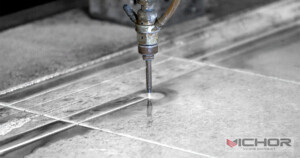
The Versatile Power of High Pressure Waterjet: Revolutionizing Modern Industry
In the world of modern manufacturing and industrial cleaning, few technologies offer the unique combination of raw power, pinpoint precision, and environmental compatibility as the high pressure waterjet. This technology, which harnesses the incredible force of water moving at supersonic speeds, has evolved from a novel concept to an indispensable tool across countless sectors. From slicing through thick titanium to delicately removing graffiti without damaging the underlying surface, the applications are as diverse as they are impressive. This article delves deep into the world of high pressure waterjet technology, exploring its core principles, vast applications, undeniable advantages, and the innovative trends shaping its future.
The Core Science: How Does a High Pressure Waterjet Work?
At its most fundamental level, a high pressure waterjet system is a masterclass in energy conversion. The process begins with a robust intensifier pump, which is the heart of the system. This pump takes in standard municipal or filtered water at a low pressure (typically around 4 bar or 60 psi) and uses hydraulic oil acting on a large piston to drive a small plunger that pressurizes the water. This intensification process can amplify the water pressure to extreme levels, often ranging from 40,000 psi (2,750 bar) to an astonishing 90,000 psi (6,200 bar) or even higher for specialized applications.
This ultra-high pressure water is then fed through heavily reinforced plumbing, made from specialized alloys, to a cutting head. In its pure form, this stream of water is already capable of cutting soft materials like foam, rubber, and food products. However, for cutting harder substances, an abrasive material, typically garnet, is introduced into the stream within a mixing tube. The water stream creates a vacuum, pulling the abrasive in and accelerating it to immense velocities. It is this abrasive-enhanced high pressure waterjet that becomes an incredibly effective cutting tool, eroding through metals, stone, composites, and glass with ease. The entire process is controlled by sophisticated CNC (Computer Numerical Control) systems, ensuring microscopic accuracy in the most complex cutting paths.
A Tool for Every Task: The Expansive Applications of Waterjet Technology
The versatility of the high pressure waterjet is its single greatest strength. Its ability to cut virtually any material without altering its intrinsic properties has made it a cornerstone in numerous industries.
Manufacturing and Metalworking: This is one of the primary domains of waterjet cutting. It is used for profiling parts from sheet metal, cutting intricate components for aerospace applications (like titanium and aluminum alloys), and creating tools and machinery parts. Unlike thermal cutting methods, a high pressure waterjet produces no Heat-Affected Zone (HAZ), meaning the structural integrity of the metal remains unchanged.
Stone and Tile Fabrication: The stone industry relies heavily on waterjets for creating intricate designs, mosaics, and custom countertops. The ability to cut complex curves and detailed patterns in granite, marble, and porcelain without chipping or cracking is unparalleled.
Aerospace and Automotive: For composites like carbon fiber and fiberglass, which are sensitive to heat and delamination, the cold-cutting nature of a high pressure waterjet is ideal. It is used to trim components, cut body panels, and shape interior parts without compromising the material’s strength.
Construction and Demolition: Beyond cutting, high pressure waterjet systems are used for hydro-demolition—the precise removal of deteriorated concrete while leaving the sound rebar and underlying structure intact. This is far superior to jackhammering, which can cause micro-fractures.
Food Processing: In a completely different application, pure waterjets are used in the food industry for hygienic and precise cutting of products like frozen meat, cakes, pizzas, and seafood. There’s no risk of contamination from a cutting blade, and the process is incredibly sanitary.
Why Choose Water? The Unmatched Advantages of Waterjet Cutting
The widespread adoption of high pressure waterjet technology is driven by a compelling list of benefits that often outweigh those of traditional cutting methods like laser, plasma, or mechanical cutting.
No Heat-Affected Zone (HAZ): As a cold-cutting process, waterjet cutting does not generate heat that can warp, melt, or alter the metallurgical properties of materials. This is critical for materials that are heat-sensitive.
Material Versatility: A single high pressure waterjet machine can cut virtually anything—metals, plastics, stone, glass, composites, ceramics, and food. There is no need for multiple dedicated machines for different materials.
Superior Precision and Quality: CNC-controlled waterjets offer exceptional accuracy, often within a tolerance of ± 0.1 mm. The cut edge is typically smooth and requires little to no secondary finishing, saving time and money.
Environmental Benefits: The process produces no hazardous fumes or vapors. While it uses water, many modern systems are closed-loop, allowing for water recycling and filtration. The primary waste, spent abrasive and cut material, is inert and can often be recycled or disposed of safely.
Minimal Set-Up and Quick Programming: Transitioning from one job to another is often as simple as loading a new digital file and, if necessary, changing the material on the cutting bed. There are no custom tools or dies required.
The Anatomy of a Modern High Pressure Waterjet System
Understanding the key components of a waterjet system helps in appreciating its engineering marvel. A typical abrasive high pressure waterjet system consists of:
The Pump: The system’s powerhouse, either an intensifier pump (which creates pressure through a reciprocating motion) or a direct-drive pump (which uses a crankshaft to act on the plungers directly). Intensifier pumps are more common for high-power applications.
The CNC Controller: The brain of the operation. It translates a digital design file (e.g., from CAD software) into precise movements for the X and Y axes of the cutting bridge.
The Cutting Table: The work surface, often a submerged slat bed to contain the water and debris and reduce noise.
The Cutting Head: The business end of the system. It houses the orifice (a jeweled nozzle that creates the fine water stream), the abrasive mixing chamber, and the focusing tube (or nozzle) where water and abrasive mix and accelerate.
Abrasive Delivery System: A hopper that holds the garnet abrasive and a feeder mechanism that meters it into the cutting head.
The Future is Sharp: Innovations in Waterjet Technology
The evolution of the high pressure waterjet is far from over. Ongoing research and development are focused on enhancing its capabilities and efficiency. Key trends include:
5-Axis Cutting: Traditional waterjets cut in a flat, 2D plane. 5-axis cutting heads can tilt and rotate, allowing for bevelled edges, tapered cuts, and complex 3D shapes in a single setup, opening new possibilities in manufacturing.
Dynamic Waterjet: This intelligent technology automatically adjusts the cutting head’s speed to account for natural lag in the stream at sharp corners and curves. This results in drastically improved accuracy and part quality without sacrificing speed.
Intelligent Pumps: New pump designs are focusing on greater energy efficiency, reliability, and the ability to provide variable pressure on the fly, optimizing pressure for the specific material being cut to reduce operating costs.
Green Technology: Advancements in water recycling systems and the development of more sustainable abrasive alternatives are making high pressure waterjet an even more environmentally friendly choice.
In conclusion, the high pressure waterjet is more than just a tool; it is a transformative technology that has redefined the boundaries of cutting and cleaning. Its unique cold-cutting action, unparalleled versatility across materials, and ever-improving precision make it a critical asset for industries striving for innovation, quality, and efficiency. As technology continues to advance, the roar of the high pressure waterjet will undoubtedly remain a central sound in the symphony of modern industry.
continue reading
Related Posts
- 1460 words7.4 min read


